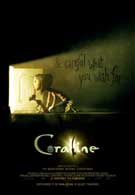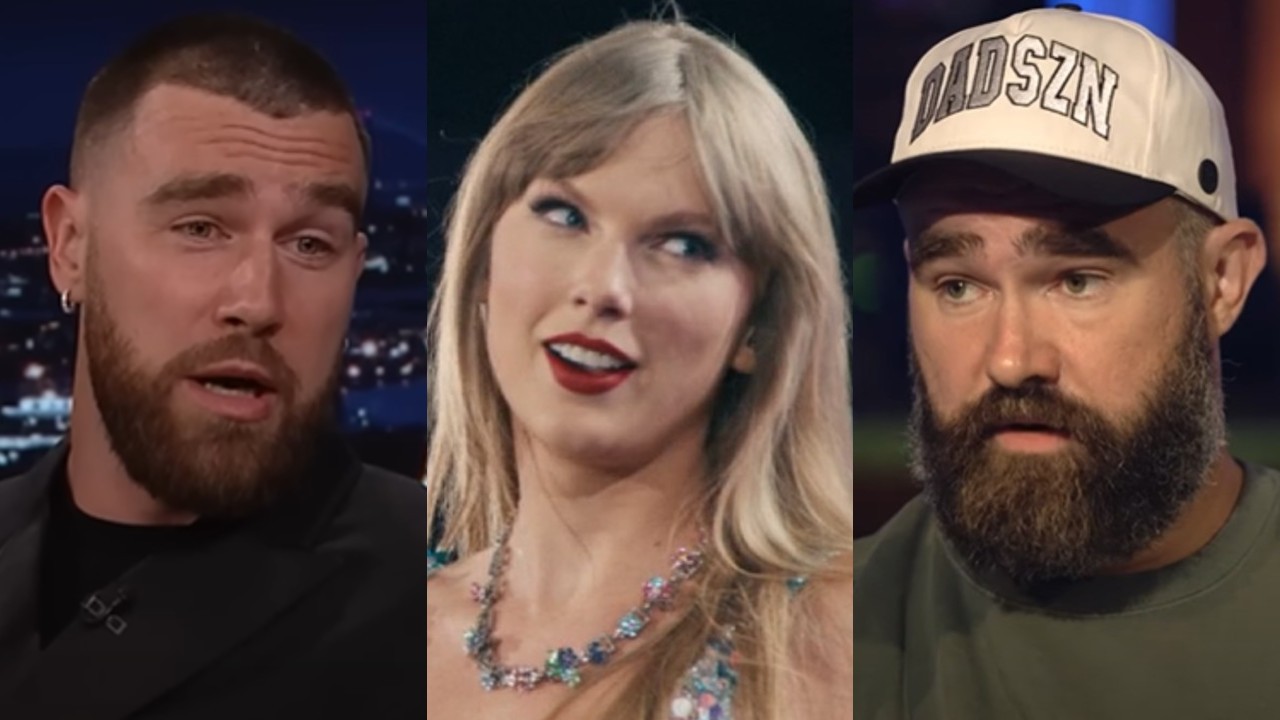Henry Selick and Tim Burton need each other. In 1993 they collaborated on a stop-motion film called The Nightmare Before Christmas and created magic. Since then they’ve both separately attempted other stop-motion projects. Burton released Corpse Bride back in 2005 while Selick has done Monkeybone and now Coraline. Of those three it is Coraline that works best, but it’s hard not to notice that there’s some vital spark missing. The imagination or fire or whatever the heck you want to call it that made Nightmare come so vibrantly and irrevocably alive isn’t found here or in any of those other movies. Coraline tries and sometimes even succeeds, but more often than not it’s trapped in a strange limbo, lost between what’s going too far and what’s not far enough.
What I’m getting at here is that I don’t know who this movie was made for. It’s almost too dark and twisted for kids. This is after all, the story of a little girl who travels to an alternate world where she meets an alternate version of her parents, who scheme to pluck out her eyes. That’s the kind of plot that’ll give your toddler nightmares. On the other hand it’s not exactly edgy or dense. For adults the tone is incredibly tame, a world filled with sharp colors and not really all that scary villains. A little girl falls down a hole, has a very, very brief adventure and then goes home. The end. Coraline is too much for kids and not enough for adults and so we’re left with a movie which occasionally feels static, dead, and maybe even stiff; like watching a re-animated corpse.
This may be coming off too harsh. There is a lot to like about Coraline. Visually it’s an animated feast, full of colorful, creative, and surprising characters dancing and flowing and strutting through Selick’s stop-motion world. Stop-motion animation is, even without a story worth telling, compelling. Every frame looks as if it’s right there and you can reach out and touch it. That tactile feeling is made even more real than normal, since Coraline is presented in 3D. Part of the magic of stop-motion has always been the depth it gives everything and that’s only heightened by putting on a funny pair of glasses.
They’ve put together a nice voice cast too. Dakota Fanning is unrecognizable as the voice of the movie’s lead Coraline, Ian McShane steals scenes as an acrobatic supporting character, and you’ll have a blast listening to John Hodgman plugging away as Coraline’s simultaneously weary and witty father. One problem though: Teri Hatcher sucks. She’s been asked to play the movie’s villain and she’s a disaster. Granted the character isn’t particularly well written to begin with but her shrieking monotone (who knew such a thing was even possible?) is more annoying than frightening.
Coraline is a lot of fun to look at and it’s told creatively in spurts. But only in spurts. Coraline, the movie’s plucky little heroine character is the sort that will appeal more to kids except, as discussed earlier, kids will probably be too terrified that their parents are going to rip their eyes out to enjoy her. The story is full of silly logical gaps, of the type you might find in any children’s story but may be annoying to adults. Perhaps worst of all it doesn’t really go anywhere. Coraline survives, so I guess that’s a story of achievement of its own, but these characters needed more growth.
The best praise I can muster in defense of Selick’s work is that for adults, it’s a pleasant little film. It’s worth your $10 to plop down in a theater and enjoy the whole 3D experience, it’s just not particularly memorable. Coraline works as long as you don’t expect it to stick with you. Burton and Selick need each other. Get the band back together guys. We need a new Nightmare and though Coraline is nice, you’ve done better.












